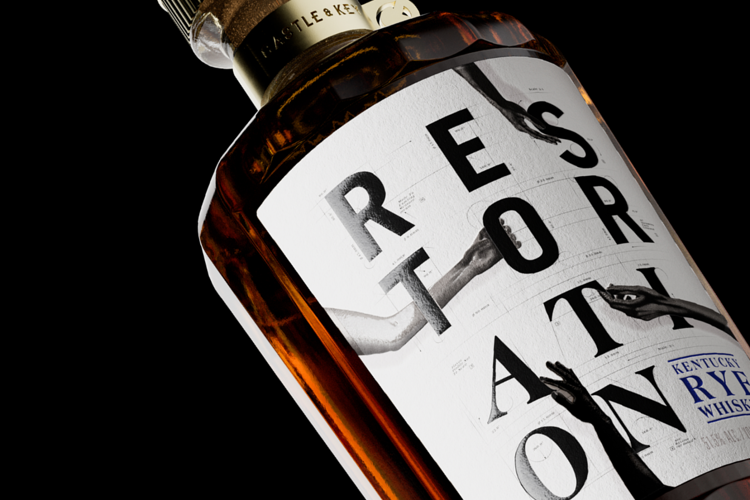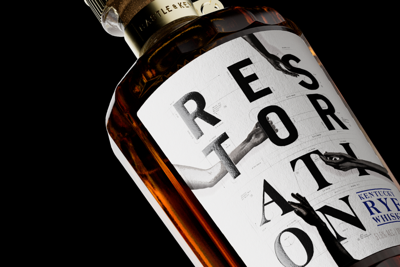
When Castle & Key was founded in 2014, there were a lot of significant developments associated with the opening of the new distillery. The facility involved a complete refurbishing of the historic Old Taylor Distillery in Frankfort, Ky., a magnificent castle of whiskey history. The company announced that its first distiller would be Marianne Eaves, the first female distiller to run a major operation in decades. She departed the company for other ventures in 2019.
Since it takes time to age whiskey from clear corn juice to nuanced brown magic, the folks at Castle & Key did what a lot of young distilleries have to do in order to get some cash flow going — they started out with clear spirits as their first products released to the public. Their Sacred Spring Vodka was, well … vodka, so you can’t really expect too much extraordinary out of something like that. It was fine and proved that the operation was proficient in making their own base spirit. It was also a jumping off point for their next releases, a series of really fine gins, headlined by Roots of Ruin, a product made using eight different botanicals native to Kentucky. Other small batch London Dry-style gins followed Roots of Ruin and were quite interesting, especially when you noticed that the mash bill of these clear spirits are dominated by a high rye content.
Most gins basically use a vodka base and then add botanicals, but Castle & Key started out by building a whole new recipe for their gin. With 63 percent rye, 17 percent yellow corn and 20 percent malted barley, the distillery certainly wasn't taking the easy way out — rye is a much more difficult grain to work. The result of Castle & Key's efforts was a series of gins that have a spicier backbone to play with the floral and herbal botanicals that characterize gin.
So it’s no surprise that Castle & Key’s first aged spirit would be a rye whiskey, because they’ve already invested time and money in learning how to distill the sticky grain. Restoration Rye uses that exact same recipe as the base for their gins, but instead of flavoring the spirit with a Colonel Sanders array of herbs and spices, they flavor it with two more precious additions — charred oak and time. They actually use the same recipe to produce different “pods” of barrels, each with its own unique flavor profile formed during the distillation and aging processes. Then Castle & Key blends those two batches together to create whole new products.
The 2020 Restoration Rye release features two batches, both with unique flavor profiles. Batch No. 1 is created from a blend of 60 barrels, and Batch No. 2 is drawn from 57 barrels. Batch No. 1 was released at 103 proof, not barrel strength, but a higher ABV than most rye whiskeys. This was a very conscious choice by Castle & Key to be the proof level that best showed off the spicy, nutty character of the rye. Batch No. 2 came out at 99 proof and exhibits more floral and minty aromas and flavors than the first batch. It’s really fascinating demonstration about how the same recipe can create completely different products, not dissimilar to how I would expect that a dish that I cooked out of the French Laundry cookbook probably wouldn’t taste the same as if Thomas Keller whipped it up.
For such elevated proof small batch rye whiskeys, Castle & Key has released Restoration Rye at surprisingly competitive pricing — $39.99 per bottle as a suggested retail price. Both versions are appropriate for sipping neat or on the rocks if you’re looking for a change from your everyday bourbon, but they also exhibit plenty of backbone to drive the flavors of a great Manhattan.
Jon Brown, the quality manager at Castle & Key, is proud of its first brown water, stating: “We are more than excited to release our Restoration Rye, a spirit that is thoughtful in every detail, from grain to glass, and is a true representation of the team’s hard work and attention to detail over the past five year.” His excitement is well-deserved.
Tennessee is one of only a handful of states to receive bottles from the first allocations of about 25,000 bottles of the two versions combined, so if you see some Restoration Rye on the shelf at your local liquor store, I’d suggest snatching it up posthaste. It took at least four years in barrel to get this good, but it’s been worth the wait.







